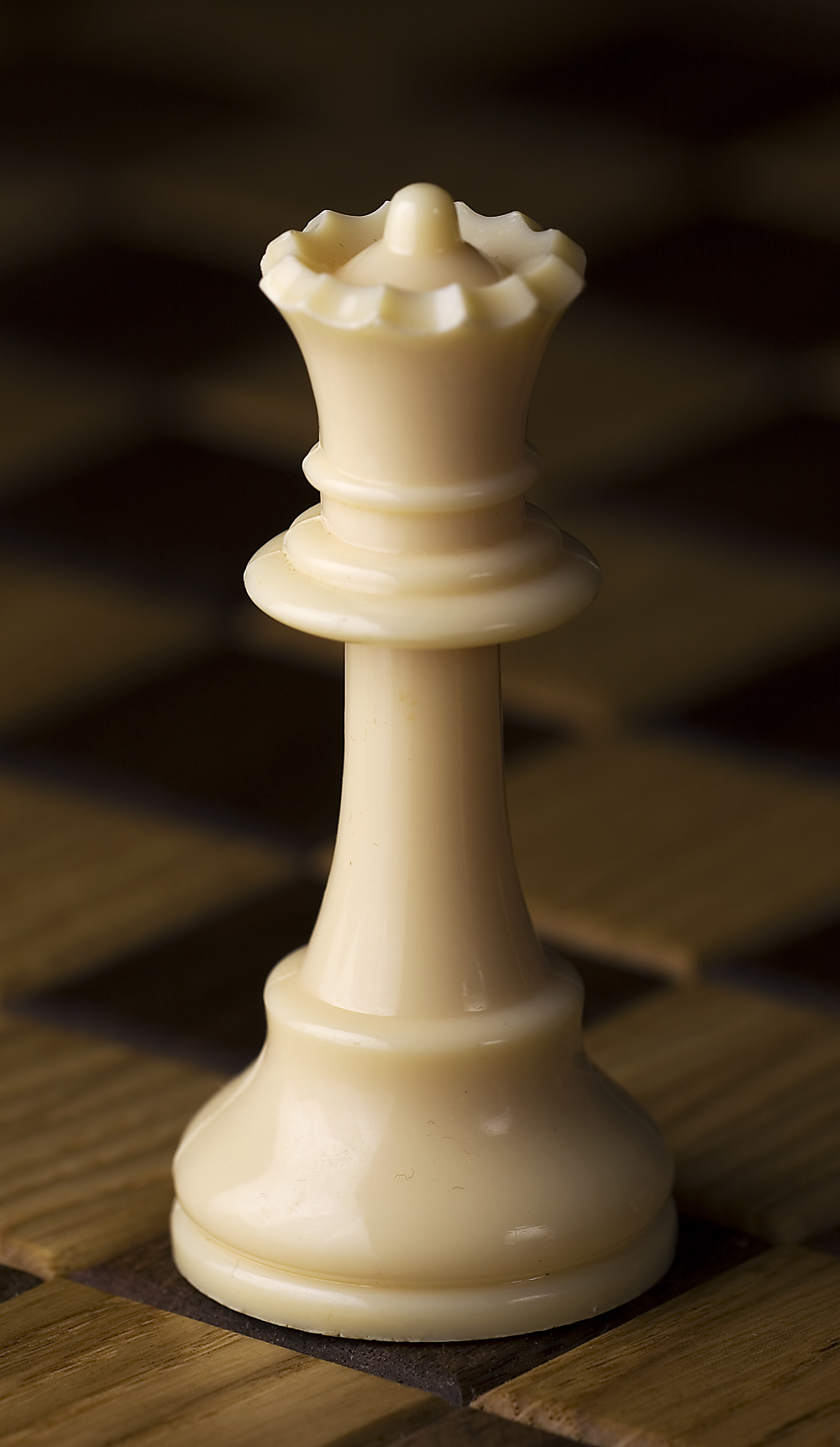Queen (chess)

The queen (♕, ♛) is the most powerful piece in the game of chess. It can move any number of squares vertically, horizontally or diagonally, combining the powers of the rook and bishop. Each player starts the game with one queen, placed in the middle of the first rank next to the king. Because the queen is the strongest piece, a pawn is promoted to a queen in the vast majority of cases.
The predecessor to the queen is the ferz, a weak piece only able to move or capture one step diagonally, originating from the Persian game of shatranj. The modern queen gained its power and its modern move in Spain in the 15th century during Isabella I's reign, perhaps inspired by her great political power.
The queen was originally the counsellor or prime minister or vizier (Sanskrit mantri, Persian farzīn, Arabic firzān, firz or wazīr). Initially, its only move was one square diagonally. Around 1300, its abilities were enhanced to allow it to jump two squares diagonally (onto a same-colored square) for its first move.
The fers changed into the queen over time. The first surviving mention of this piece as a queen or similar is the Latin regina in the Einsiedeln Poem, a 98-line Medieval Latin poem written around 997 and preserved in a monastery at Einsiedeln in Switzerland. Some surviving early medieval pieces depict the piece as a queen. The word fers became grammatically feminized in several languages, such as alferza in Spanish and fierce or fierge in French. The Carmina Burana also refer to the queen as femina (woman) and coniunx (spouse), and the name Amazon has sometimes been seen.
During the great chess reform at the end of the 15th century, Catholic nations kept using an equivalent of Latin domina ("lady"), such as dama in Spanish, donna in Italy, and dame in France, all of which evoke "Our Lady". However, Protestant nations such as Germany and England refused any derivatives of domina as it might have suggested some cult of the Virgin Mary and instead opted for secular terms such as Königin in German and "queen" in English.
In Russian, the piece keeps its Persian name of ferz; koroleva (queen) is colloquial and is never used by professional chess players. However, the names korolevna (king's daughter), tsaritsa (tsar's wife), and baba (old woman) are attested as early as 1694. In Arabic countries, the queen remains termed and, in some cases, depicted as a vizier.
Historian Marilyn Yalom proposes several factors that might have been partly responsible for influencing the piece towards its identity as a queen and its power in modern chess: the prominence of medieval queens such as Eleanor of Aquitaine, Blanche of Castile, and more particularly Isabella I of Castile; the cult of the Virgin Mary; the power ascribed to women in the troubadour tradition of courtly love; and the medieval popularity of chess as a game particularly suitable for women to play on equal terms with men. She points to medieval poetry depicting the Virgin as the chess-queen of God or Fierce Dieu.